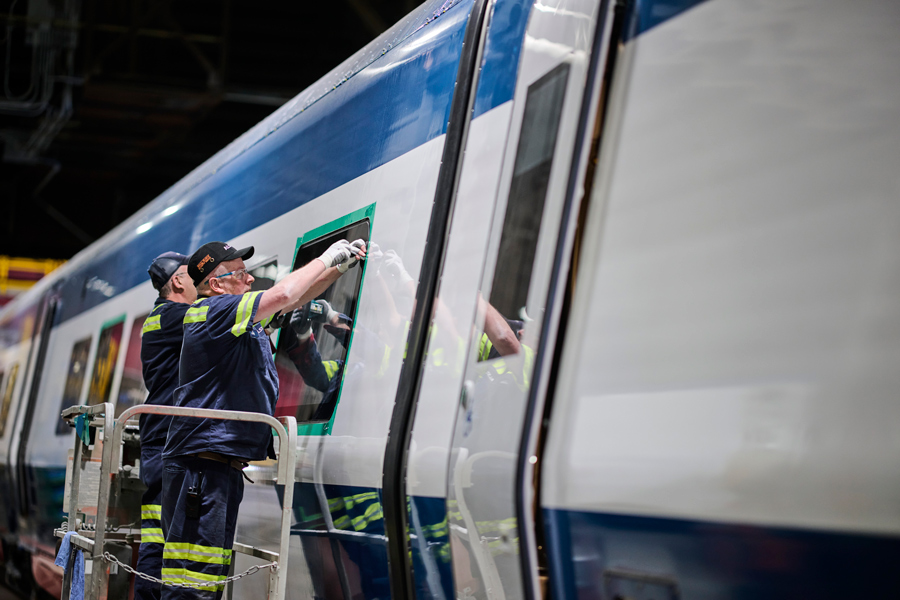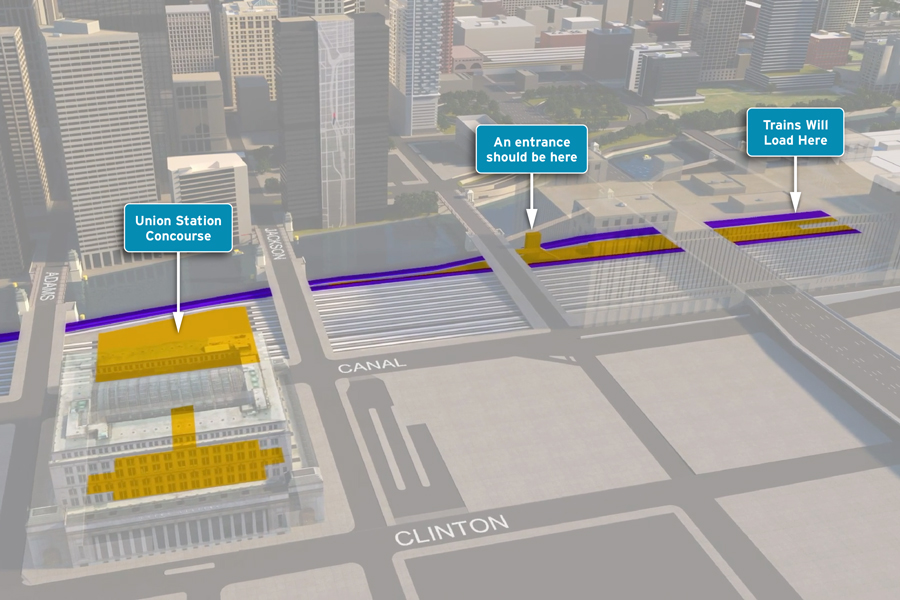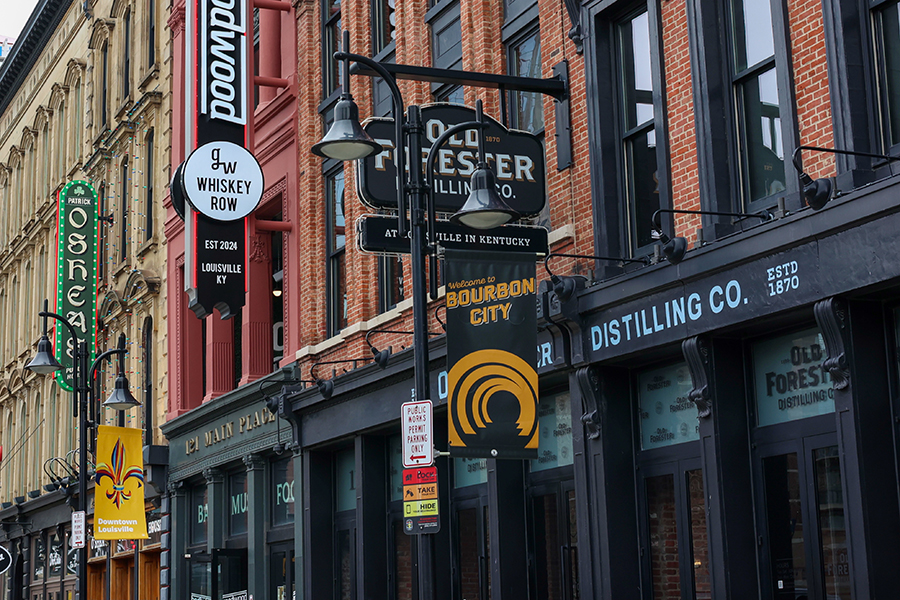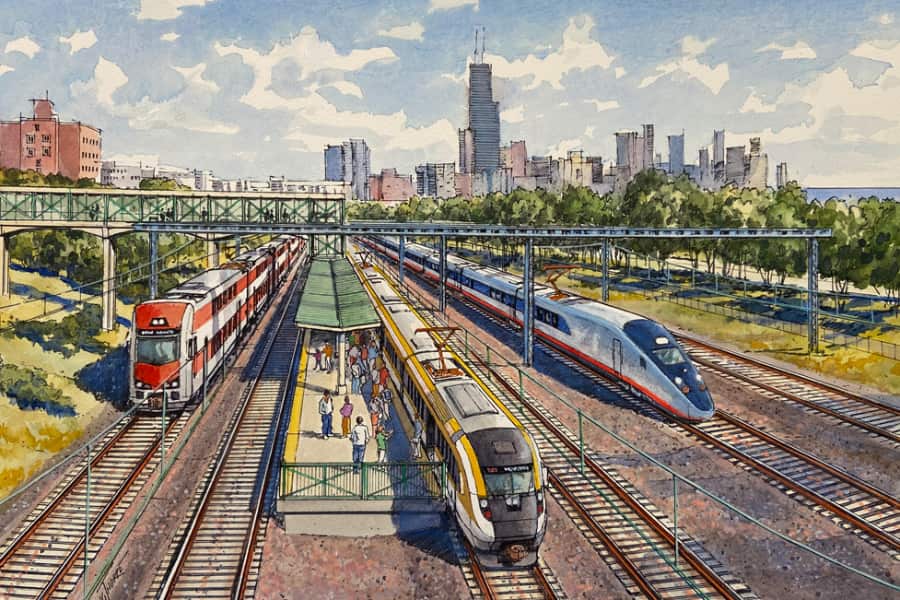Chicago Union Station needs a new entrance at Van Buren StreetAmtrak's plans for accessing the rebuilt mail platform is on the wrong track It is not too late for the State of Illinois to insist on a direct entrance. The City and State have a huge opportunity to grow...
Amtrak launched the modern era of Acela this week, introducing five new trains in the 450-mile Northeast Corridor, which stretches from Washington, D.C. to Boston. Another 23 new trainsets, operating at top speeds of 160 mph, will begin running by 2027.
The new trainsets—called NextGen Acela—offer a superior experience for riders. The manufacturer, Alstom, noted in a statement that the interiors “feature expansive windows that allow in natural light, high-quality ergonomically designed seats for maximum legroom and comfort, and winged headrests for extra support.” Other features include free high-speed Wi-Fi, upgraded cafe cars, and spacious bathrooms.
On the performance side, the trains’ lightweight design reduces their energy consumption and allows for faster acceleration. The trains also feature “dynamic tilting,” allowing them to take curves 30% faster than the old trainsets.
Each new trainset also carries 82 more people than the older models, and each has nine cars (versus six). As a result, the Acela fleet’s overall capacity will increase by more than 4,700 passengers when all 28 trains are running.
Get Involved
Tell Congress: It’s time to reconnect the country with high-speed and regional rail!
This additional capacity come at a time of surging ridership and demand for Acela trains specifically and Amtrak generally.
Amtrak set a ridership record of nearly 33 million passengers in 2024—an increase of about 15% over 2023. Acela’s ridership increased more than 9 percent, and the Northeast Corridor’s overall ridership (including Acela and conventional service) increased 16%. Amtrak’s goal is to double its overall ridership by 2040, to 66 million people.
Amtrak has consistently gained market share versus airplanes in the NEC since launching the Acela service in 2000. Between 2000 and 2021, for example, its share rose from 37% to 83% in the New York to Washington corridor, and from 20% to 75% in the New York to Boston corridor.
That trend will likely continue with the launch of NextGen trains—with payoffs for both travelers and the environment. Amtrak estimates that electrified trains in the NEC slash greenhouse-gas emissions by 83% versus driving and 73% versus flying.
It’s notable that the D.C.-to-New York corridor, where Amtrak has more than 80 percent of the air-rail market, is comparable to multiple city pairs throughout the Midwest. For example, it’s a little longer than the distance from Chicago to Indianapolis; a little shorter than the distance from Chicago to Detroit; and roughly equal to the distance from Indianapolis to St. Louis.
It’s also notable that Amtrak achieves its air-rail market dominance despite running relatively slow trains. They are often described as high-speed rail, but even the NextGen trains’ top speed of 160 mph falls far short of the global gold standard in train travel.
A recent analysis, for example, found that high-speed trains in China cover the 635 miles between two city pairs at an average speed of 197 mph. And French trains cover the 104 miles between two cities at an average speed of 169 mph.
Acela’s best average speed is 103 mph in the 69-mile corridor between Baltimore and Wilmington, Delaware.
The Transit Costs Project at New York University recently released a plan for dramatically increasing speeds and frequencies throughout the NEC—at a relatively low cost. Among other things, it calls for level boarding on all station platforms; new constant tension catenary to allow for speeds up to 200 mph; electrification of all branch lines; and simplified scheduling.
Get on it: We need new long-distance trainsets
The launch of NextGen rolling stock—originally scheduled for 2021—was delayed by manufacturing, infrastructure, and testing issues. Trump administration officials nonetheless claimed credit, releasing a statement that described the rollout as President Trump and U.S. Secretary of Transportation Sean Duffy “doing what they do best: making big, beautiful projects come to life. The launch of the new Acela is a critical starting point as we work to improve travel for millions of Americans.”
That claim was undercut by Sec. Duffy’s announcement on Tuesday that the Federal Railroad Administration would withdraw funding for four projects related to California high-speed rail, including grade separations in San Jose and station work in Madera. The awards are valued at more than $175 million.
The cuts follow the termination in July of $4 billion previously approved for the project (which California is contesting in court) despite Trump’s occasional expressions of support for HSR. Last year, for example, he noted the speed of Japanese trains and said that “we don’t have anything like that in this country. Not even close. And it doesn’t make sense that we don’t.”
In cutting funds for the California projects, Duffy asserted that “my Department will focus on making travel great again by investing in well-managed projects that can make projects like high-speed rail a reality.”
One critical step the administration could take toward improving US train travel is to work with Amtrak to place an order for new trains for long-distance routes. There are too few trains to meet the growing demand, and the existing rolling stock is more than four decades old.
Congress appropriated money for new trainsets in 2021, yet the order has not yet been placed. Please go here to sign our petition to Sec. Duffy.
One key benefit of investing in more trainsets is that it will advance an often-cited priority of the Trump administration: building the U.S. manufacturing base.
Alstom, for example, built the new Acela trainsets in upstate Hornell, New York, in a plant that employed 800 people at its peak, and with a labor force that was about 40 percent unionized. Alstom’s supply chained included 180 businesses, spanned 29 states, and created around 15,000 jobs in the US.
The mayor of Hornell recently noted that “Alstom’s continued investment in our city has not only created high-quality jobs and driven economic growth . . . but has also delivered substantial benefits to the surrounding communities and the entire region.”

The Latest from HSRA
Our Latest Blog Posts
Check out the latest news, updates, and high speed rail insights from our blog!





